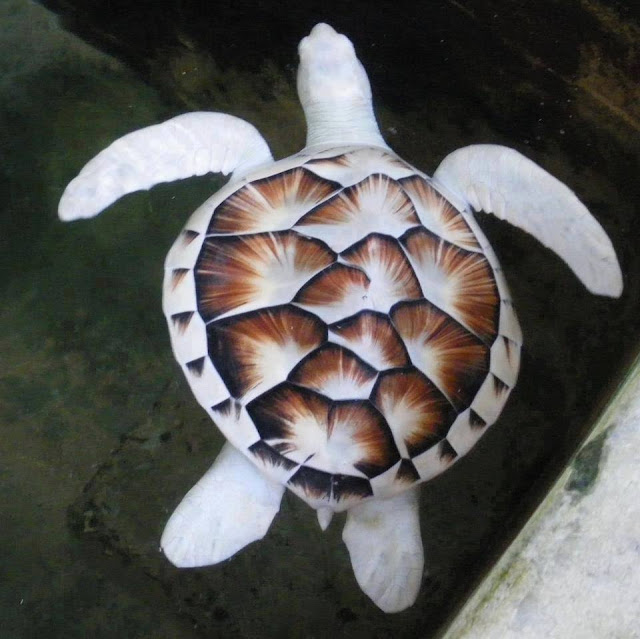White albino turtles are one of nature's most captivating creatures, characterized by their striking appearance and unique traits. These extraordinary reptiles have gained popularity among pet enthusiasts and wildlife lovers alike. In this article, we will delve into the various aspects of white albino turtles, from their biological characteristics to their care requirements, and everything in between.
As we explore the world of these enchanting turtles, we will uncover the reasons behind their rarity, the challenges they face in the wild, and how to provide them with a suitable habitat if you choose to keep one as a pet. By the end of this article, you will have a comprehensive understanding of white albino turtles, making you more informed and equipped to appreciate these unique animals.
Whether you are a potential turtle owner or simply an admirer of wildlife, this guide on white albino turtles will serve as an invaluable resource. Join us as we embark on this journey to learn more about these remarkable creatures.
Table of Contents
- What are White Albino Turtles?
- Biological Characteristics
- Habitat and Distribution
- The Unique Appearance of Albino Turtles
- Care Requirements for White Albino Turtles
- Feeding White Albino Turtles
- Common Health Issues
- Conservation Status
What are White Albino Turtles?
White albino turtles are a rare variation of turtles that exhibit a lack of pigmentation, resulting in their distinctive white shells and bodies. This condition, known as albinism, occurs due to a genetic mutation that affects the production of melanin, the pigment responsible for coloring in animals. As a result, these turtles often have red or pink eyes, which further enhances their unique appearance.
Biological Characteristics
Understanding the biological characteristics of white albino turtles is crucial for appreciating their uniqueness. Here are some key features:
- Species Variability: White albino turtles can belong to various species, including the common slider turtle and the red-eared slider.
- Size: Depending on the species, adult turtles can range in size from 4 to 12 inches in shell length.
- Life Span: With proper care, white albino turtles can live for 20 to 40 years in captivity.
- Behavior: These turtles are generally docile and can become accustomed to human interaction.
Habitat and Distribution
White albino turtles are not a separate species but rather a genetic mutation found in various turtle species. They can be found in different habitats, such as:
- Freshwater lakes and ponds
- Rivers and streams
- Swamps and marshes
However, their rarity in the wild means that they are not commonly found in their natural habitats. Due to their unique coloration, they are more susceptible to predation and environmental challenges.
The Unique Appearance of Albino Turtles
The defining feature of white albino turtles is their striking appearance, which includes:
- White Shell: The lack of pigmentation gives their shell a bright white color, which can be glossy or matte.
- Red or Pink Eyes: Due to the absence of melanin, their eyes appear red or pink, making them stand out.
- Soft Skin: The skin of albino turtles is often softer and lighter in color compared to their non-albino counterparts.
Care Requirements for White Albino Turtles
Providing proper care for white albino turtles is essential to ensure their health and well-being. Below are some key care requirements:
Habitat Setup
To create a suitable habitat for your white albino turtle, consider the following:
- Large aquarium or turtle tank (minimum 50 gallons for adults)
- Water filtration system to maintain water quality
- UVB lighting to promote healthy shell and bone development
- Hiding spots and basking areas to mimic their natural environment
Temperature and Water Conditions
Maintaining the right temperature and water conditions is crucial for the health of white albino turtles:
- Water temperature: 75-80°F (24-27°C)
- Air temperature: 85-90°F (29-32°C) in basking areas
- pH level: 6.5-7.5 for optimal health
Feeding White Albino Turtles
Feeding your white albino turtle a balanced diet is essential for their growth and development. Here are some feeding tips:
- Diet Composition: A mix of commercial turtle pellets, leafy greens, and occasional protein sources like insects or fish.
- Feeding Frequency: Juveniles should be fed daily, while adults can be fed every other day.
- Supplementation: Consider adding calcium and vitamin supplements to their diet.
Common Health Issues
Like all pets, white albino turtles can face various health challenges. Some common health issues include:
- Shell Rot: Often caused by poor water quality or injuries.
- Respiratory Infections: Can occur due to inadequate heating or humidity levels.
- Vitamin Deficiencies: Lack of UVB exposure can lead to metabolic bone disease.
Conservation Status
While white albino turtles are not classified as a separate species, their rarity leads to conservation concerns. Here are some important points:
- Habitat loss and pollution threaten their natural populations.
- Illegal poaching for the pet trade exacerbates their decline.
- Conservation efforts are necessary to protect their natural habitats.
Conclusion
In conclusion, white albino turtles are extraordinary creatures that require special care and attention. Their unique appearance and fascinating characteristics make them a popular choice for pet owners and wildlife enthusiasts. By understanding their needs and challenges, you can provide a suitable environment for these remarkable reptiles. If you are considering adopting a white albino turtle or wish to learn more about them, please feel free to leave your comments or share this article with others who might be interested.
Closing Remarks
Thank you for exploring the captivating world of white albino turtles with us. We hope this article has provided you with valuable insights and knowledge about these unique reptiles. We invite you to return to our site for more informative articles and resources on wildlife and pet care.




